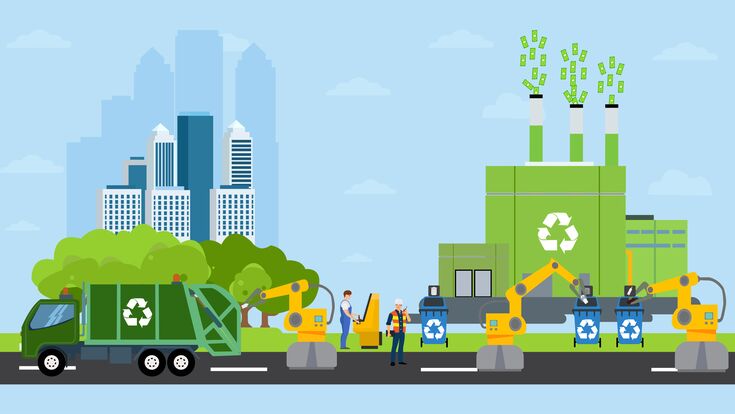Opinion : Climate Mitigation: What Waste has to do with it?

Waste sector has huge potential for climate mitigation
A recent study examined GHG reduction potential of the waste sector against the background of 2018 revision of EU waste legislation. It looked at 10 different waste streams and found that at the status quo, the waste industry is, for these waste streams, already nearly carbon neutral today, with only 13 million tonnes CO2eq net emissions per year. Furthermore, by successfully implementing the current EU waste legislation and applying the same recycling and landfill targets as set for Municipal waste, to Industrial and Commercial waste by 2035 across the EU27+UK, the European waste management sector would be able to deliver considerable savings of 150 Mt CO2eq.
With even more ambitious performance it would be possible to almost double this potential, leading to savings of 296 Mt CO2eq, which is equal to the total net GHG emissions of Spain (for 2019)[1]. This could be achieved with even more ambitious recycling targets and if waste that can be recycled or treated for energy recovery would not be allocated to landfills.
EU legislation under review should strive for further climate and environment benefits
This study comes out at a crucial time. The European Commission has just started the EU Waste Framework Directive review process and the revision of the EU Landfill Directive is foreseen for 2024. It is the perfect moment to tap into the potential of CO2 savings through ambitious waste legislation.
The upcoming reviews should first of all look at waste prevention and then aim at bringing the treatment of each waste stream to the highest step of the Waste Hierarchy feasible. While the previous legislation has focused on binding targets for Municipal Waste, the time has come for Commercial and Industrial waste to be tackled head-on.
The renewed EU-Landfill Directive should tackle diverting all waste that can be recycled or recovered from landfills. After all, the study shows that the largest gains in terms of GHG reduction are made by reducing landfilling, in particular of organic waste materials, such as paper, cardboard and biowaste.
This is one of the reasons why any consideration to put waste incineration under the EU ETS as currently discussed in the European Parliament, must depend on the outcome of a holistic impact assessment that takes into account the waste management sector as a whole. Making WtE more expensive due to EU ETS could make landfilling more attractive in some Member States which still heavily rely on this option. And this would not serve the climate.
With regard to the review of the EU Waste Framework Directive the European Commission has been hinting at the idea of setting quantitative reduction targets (50% by 2030) for the residual – non recyclable – municipal waste stream. Quantitative reduction targets of residual municipal waste alone would not solve the waste problem but would potentially increase fly-tipping and residual waste ending up in recycling bins even if this waste is not suitable for quality recycling. This would make sorting and recycling operations less efficient and more costly. It would also potentially contribute to illegal waste treatment[2], an already deep crack in the European environmental policy. Instead, the policymakers should look into ways to strengthen the Waste Hierarchy and support the prevention of waste in the first place (e.g. via eco-design) as well as source separation to enable quality recycling.
For the residual waste that is left after prevention, sorting and recycling Waste-to-Energy (WtE) provides a reliable solution. It creates value by recovering energy and materials that would otherwise be lost. This is how it makes considerable contributions to climate mitigation.
Furthermore, the European WtE sector is looking into Carbon Capture and Use or Storage (CCUS) removing carbon dioxide from the atmosphere.
If supported by EU policies, WtE will be a pivotal enabler of the achievement of EU carbon neutrality by 2050, while keep on contributing to sustainable waste management and pollution prevention
[1] Source: European Environmental Agency Data Viewer, total net emissions including international aviation
[2] INTERPOL report alerts to sharp rise in plastic waste crime – August 2020, European Union Serious and Organised Crime Threat Assessment (SOCTA) 2021 | EUROPOL

